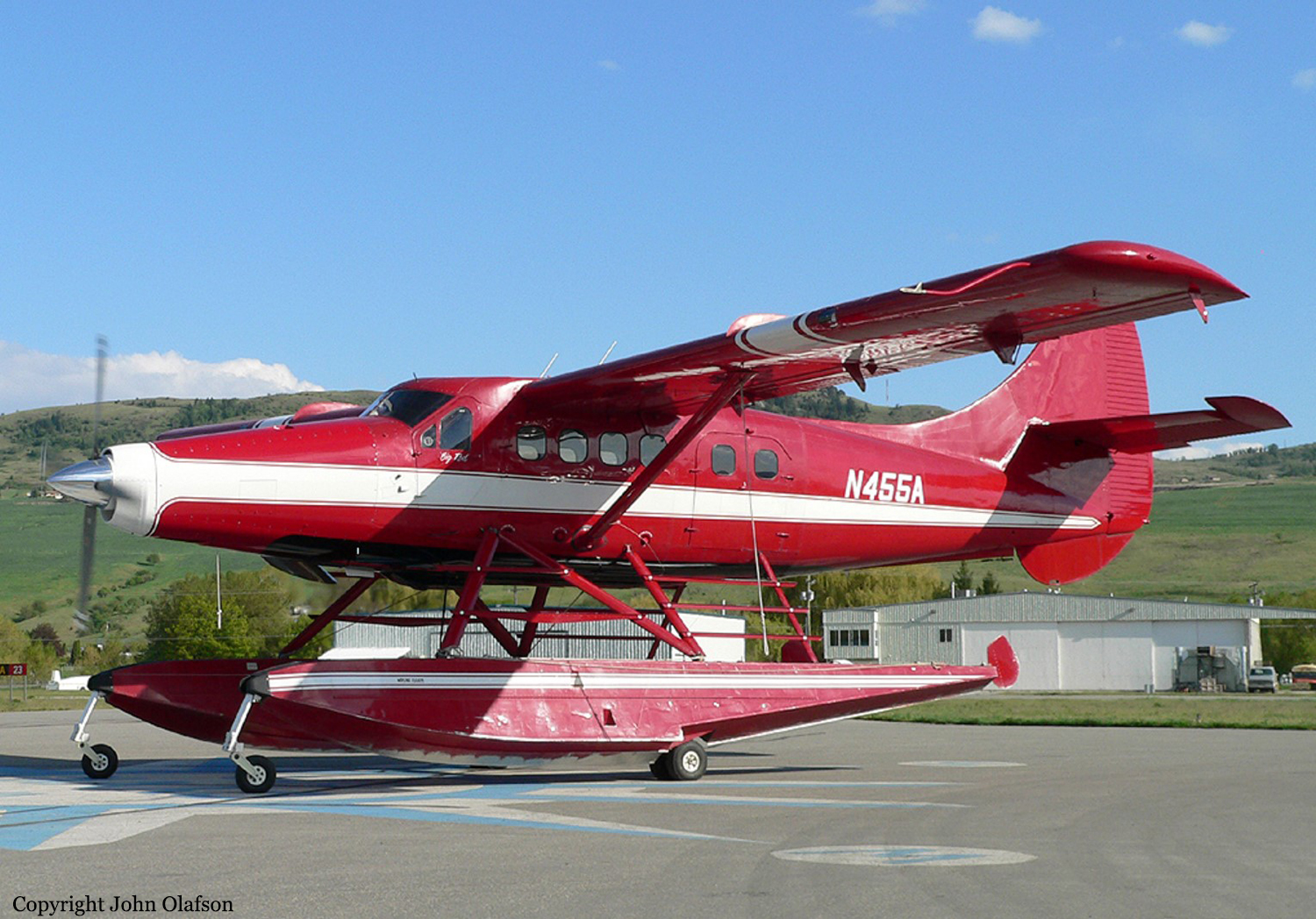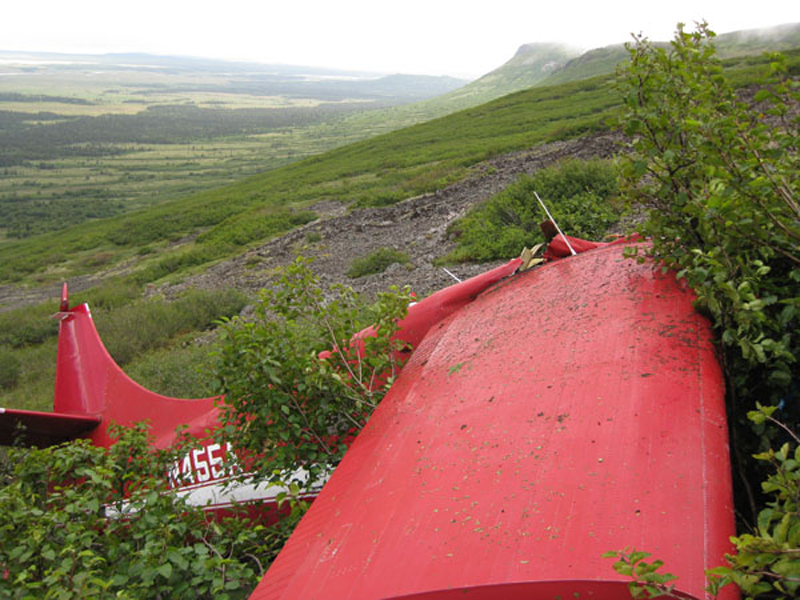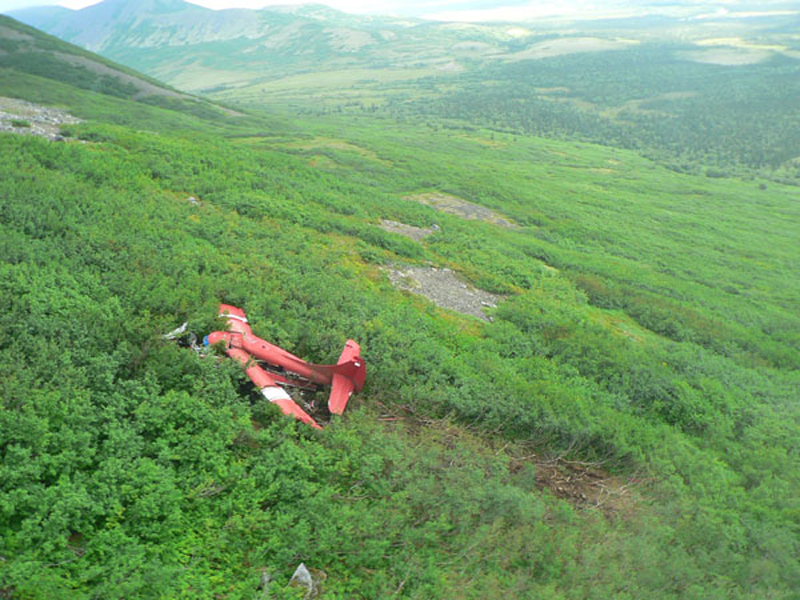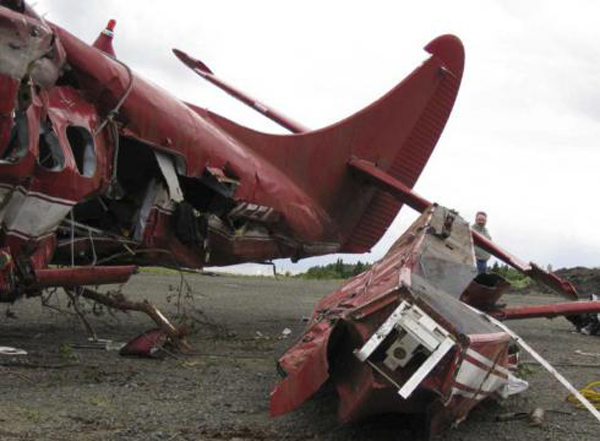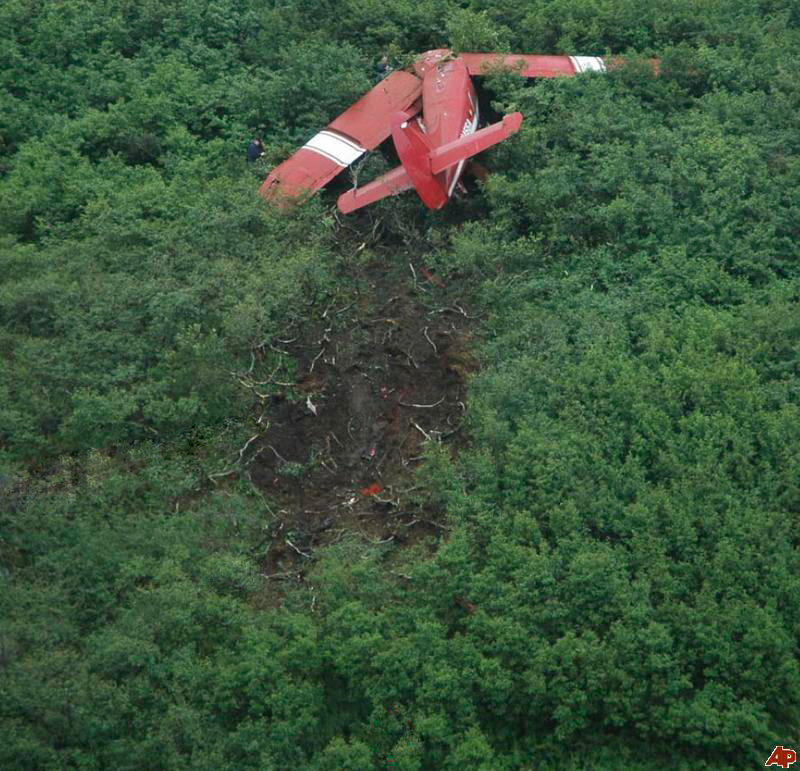Country
Crash of a De Havilland DHC-3T Turbo Otter in Iliamna: 3 killed
Date & Time:
Sep 15, 2015 at 0606 LT
Registration:
N928RK
Survivors:
Yes
Schedule:
Iliamna - Swishak River
MSN:
61
YOM:
1954
Crew on board:
1
Crew fatalities:
Pax on board:
9
Pax fatalities:
Other fatalities:
Total fatalities:
3
Captain / Total hours on type:
450.00
Aircraft flight hours:
15436
Circumstances:
On September 15, 2015, about 0606 Alaska daylight time, a single-engine, turbine-powered, float-equipped de Havilland DHC-3T (Otter) airplane, N928RK, impacted tundra-covered terrain just after takeoff from East Wind Lake, about 1 mile east of the Iliamna Airport, Iliamna, Alaska. Of the 10 people on board, three passengers died at the scene, the airline transport pilot and four passengers sustained serious injuries, and two passengers sustained minor injuries. The airplane sustained substantial damage. The airplane was registered to and operated by Rainbow King Lodge, Inc., Lemoore, California, as a visual flight rules other work use flight under the provisions of 14 Code of Federal Regulations (CFR) Part 91. Dark night, visual meteorological conditions existed at the departure point at the time of the accident, and no flight plan was filed for the flight. At the time of the accident, the airplane was en route to a remote fishing site on the Swishak River, about 75 miles northwest of Kodiak, Alaska.
Probable cause:
The pilot's decision to depart in dark night, visual meteorological conditions over water, which resulted in his subsequent spatial disorientation and loss of airplane control. Contributing to the accident was the pilot's failure to determine the airplane's actual preflight weight and balance and center of gravity (CG), which led to the airplane being loaded and operated outside of the weight and CG limits and to a subsequent aerodynamic stall.
Final Report:
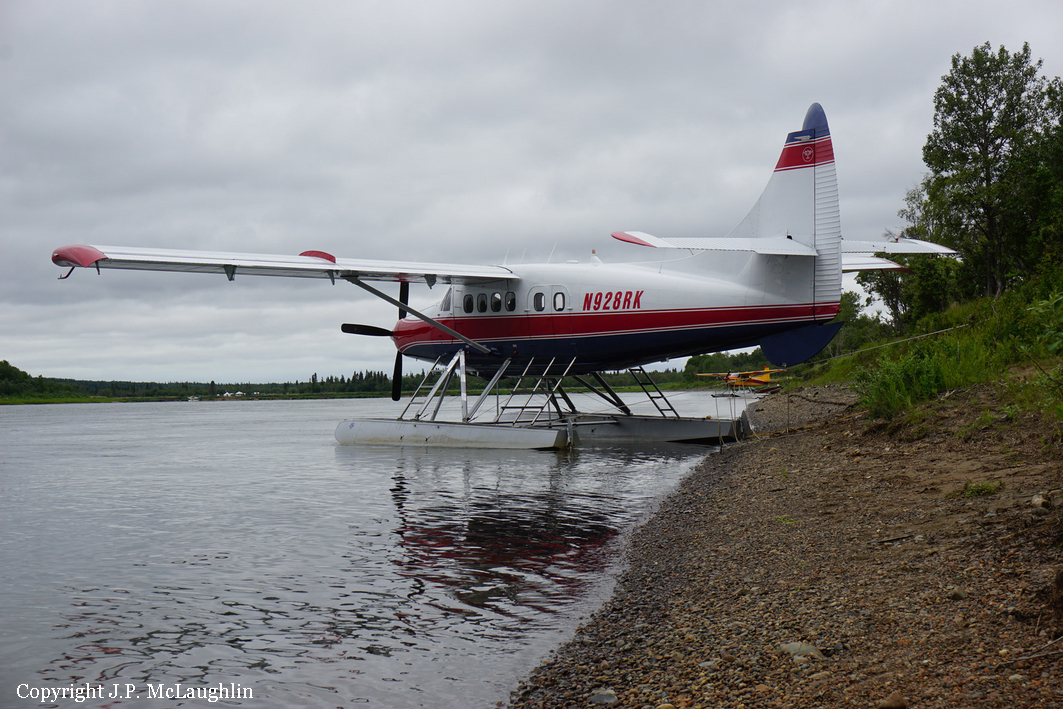
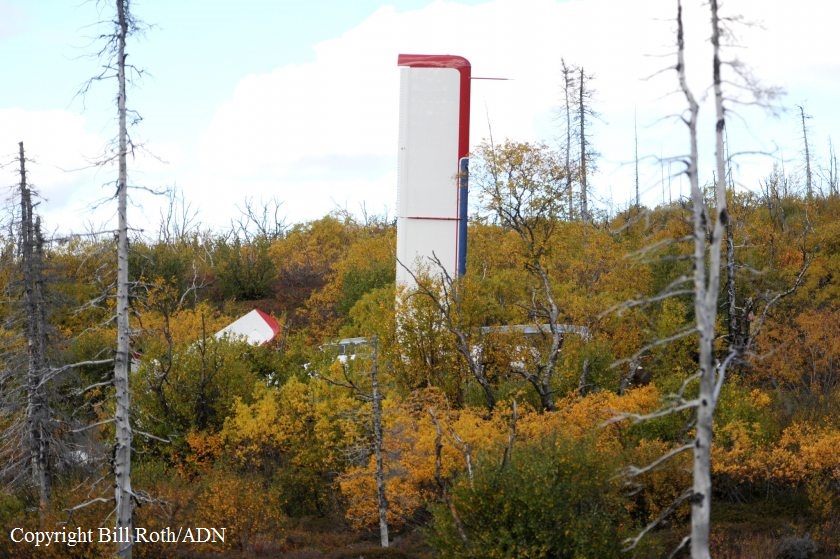
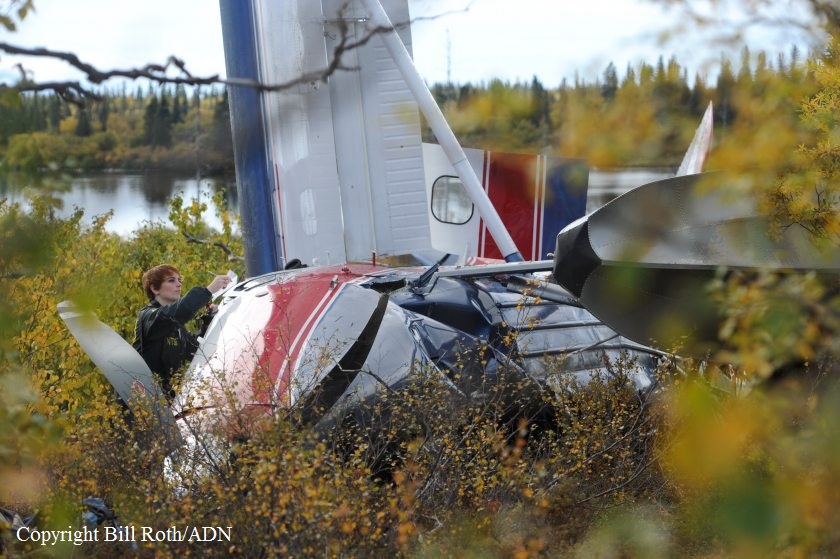
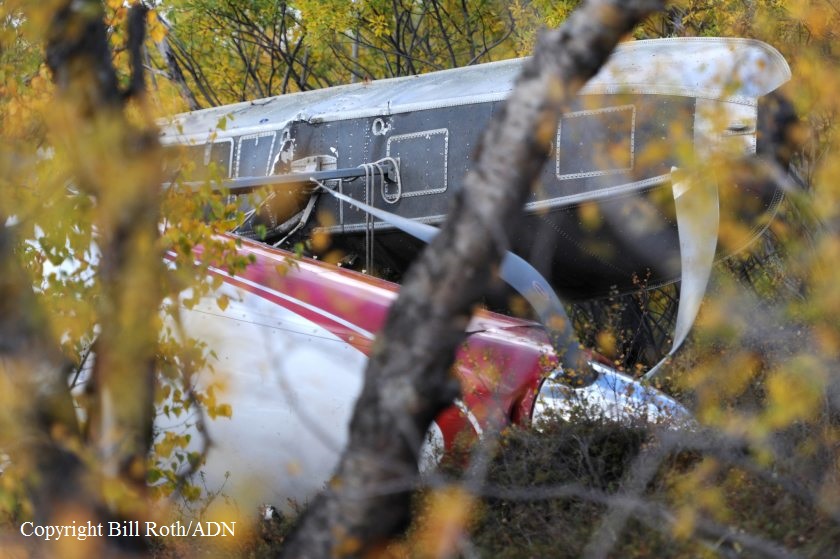
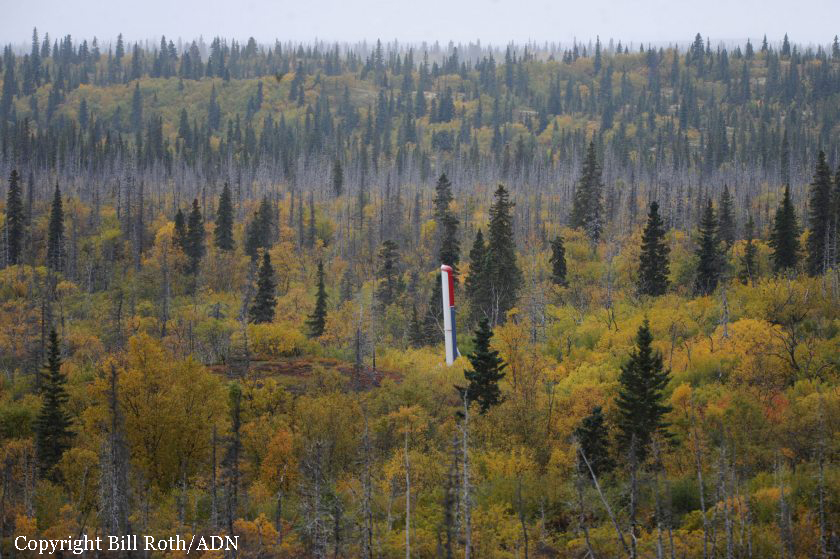
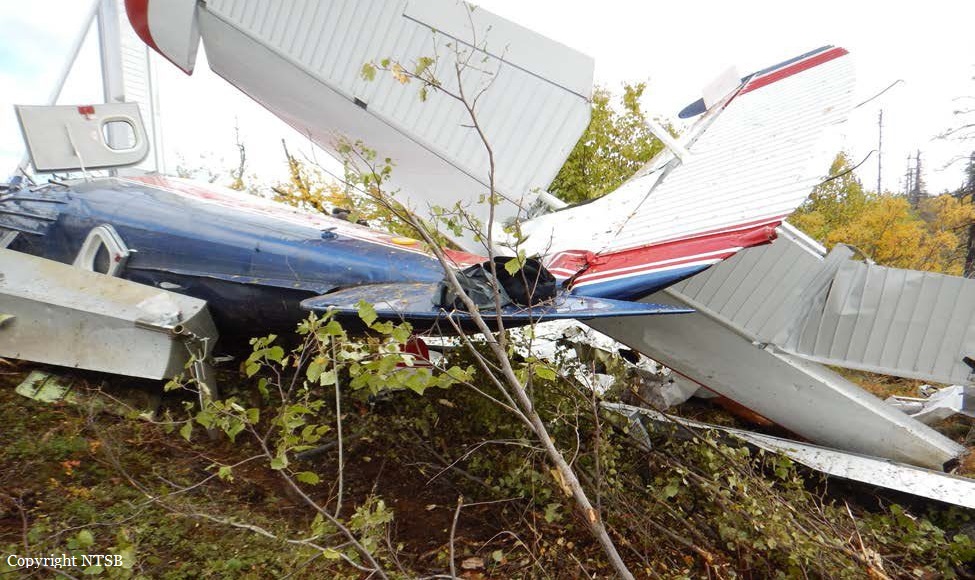
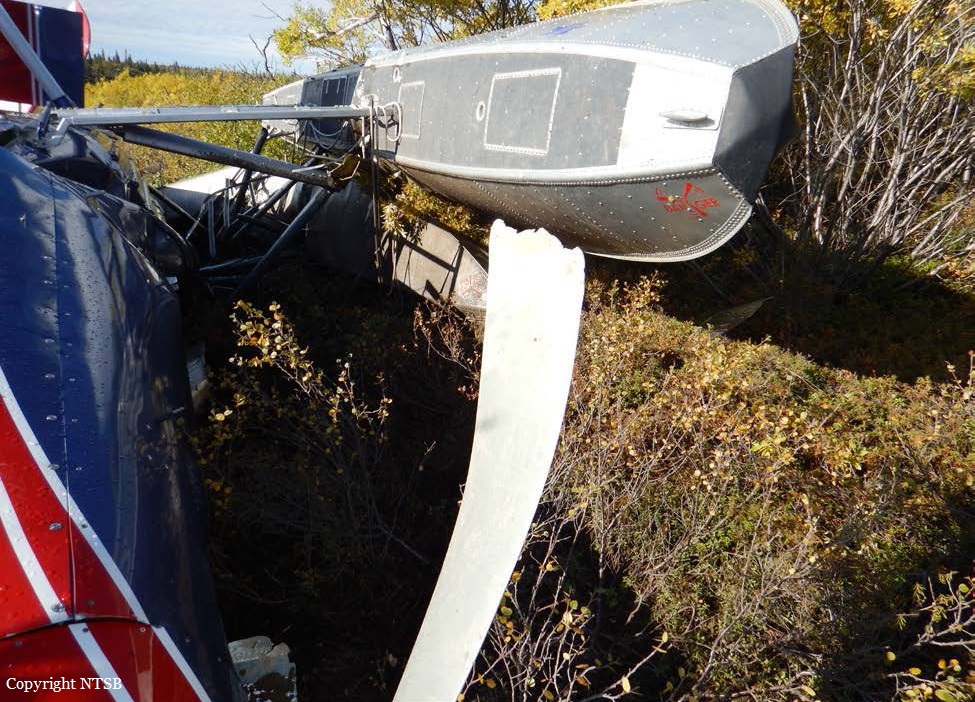
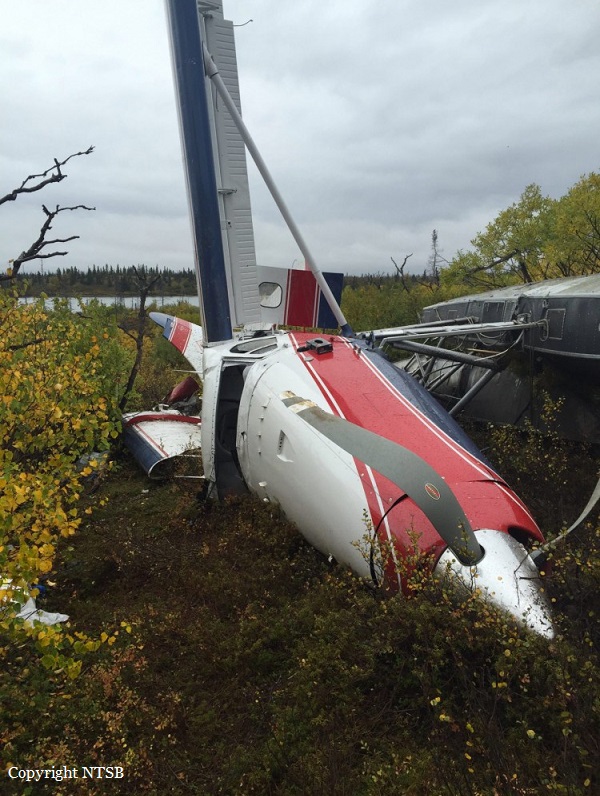
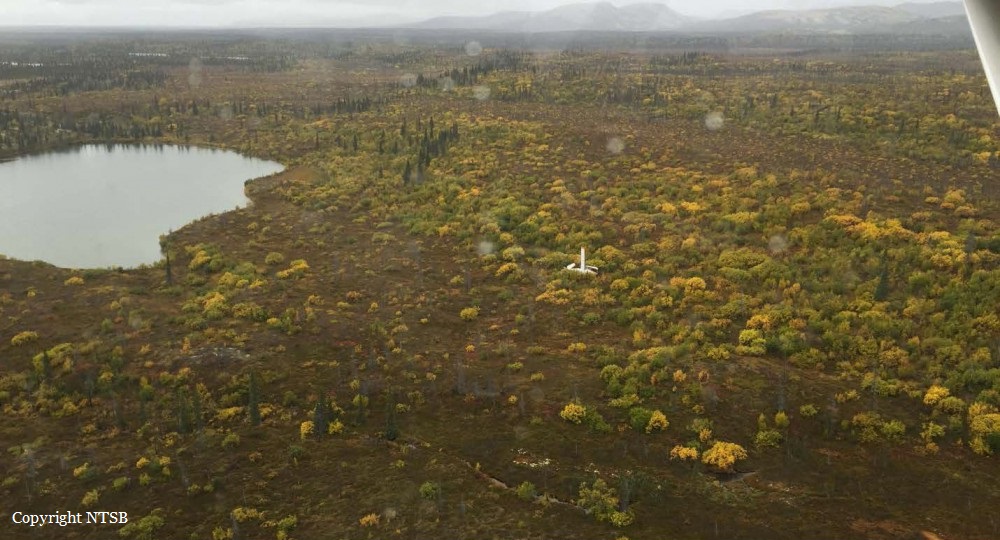
Crash of a De Havilland DHC-3T Turbo Otter near Ella Lake: 9 killed
Date & Time:
Jun 25, 2015 at 1215 LT
Registration:
N270PA
Survivors:
No
Schedule:
Ketchikan - Ketchikan
MSN:
270
YOM:
1958
Crew on board:
1
Crew fatalities:
Pax on board:
8
Pax fatalities:
Other fatalities:
Total fatalities:
9
Captain / Total hours on type:
40.00
Aircraft flight hours:
24439
Circumstances:
The airplane collided with mountainous, tree-covered terrain about 24 miles east-northeast of Ketchikan, Alaska. The commercial pilot and eight passengers sustained fatal injuries, and the airplane was destroyed. The airplane was owned by Pantechnicon Aviation, of Minden, Nevada, and operated by Promech Air, Inc., of Ketchikan. The flight was conducted under the provisions of 14 Code of Federal Regulations (CFR) Part 135 as an on-demand sightseeing flight; a company visual flight rules flight plan (by which the company performed its own flight-following) was in effect. Marginal visual flight rules conditions were reported in the area at the time of the accident. The flight departed about 1207 from Rudyerd Bay about 44 miles east-northeast of Ketchikan and was en route to the operator’s base at the Ketchikan Harbor Seaplane Base, Ketchikan. The accident airplane was the third of four Promech-operated float-equipped airplanes that departed at approximate 5-minute intervals from a floating dock in Rudyerd Bay. The accident flight and the two Promech flights that departed before it were carrying cruise-ship passengers who had a 1230 “all aboard” time for their cruise ship that was scheduled to depart at 1300. (The fourth flight had no passengers but was repositioning to Ketchikan for a tour scheduled at 1230; the accident pilot also had his next tour scheduled for 1230.) The sightseeing tour flight, which the cruise ship passengers had purchased from the cruise line as a shore excursion, overflew remote inland fjords; coastal waterways; and mountainous, tree-covered terrain in the Misty Fjords National Monument Wilderness. Promech pilots could choose between two standard tour routes between Rudyerd Bay and Ketchikan, referred to as the “short route” (which is about 52 nautical miles [nm], takes about 25 minutes to complete, and is primarily over land) and the “long route” (which is about 63 nm, takes about 30 minutes to complete, and is primarily over seawater channels). Although the long route was less scenic, it was generally preferred in poor weather conditions because it was primarily over water, which enabled the pilots to fly at lower altitudes (beneath cloud layers) and perform an emergency or precautionary landing, if needed. Route choice was at each pilot’s discretion based on the pilot’s assessment of the weather. The accident pilot and two other Promech pilots (one of whom was repositioning an empty airplane) chose the short route for the return leg, while the pilot of the second Promech flight to depart chose the long route. Information obtained from weather observation sources, weather cameras, and photographs and videos recovered from the portable electronic devices (PEDs) of passengers on board the accident flight and other tour flights in the area provided evidence that the accident flight encountered deteriorating weather conditions. Further, at the time of the accident, the terrain at the accident site was likely obscured by overcast clouds with visibility restricted in rain and mist. Although the accident pilot had climbed the airplane to an altitude that would have provided safe terrain clearance had he followed the typical short route (which required the flight to pass two nearly identical mountains before turning west), the pilot instead deviated from that route and turned the airplane west early (after it passed only the first of the two mountains). The pilot’s route deviation placed the airplane on a collision course with a 1,900-ft mountain, which it struck at an elevation of about 1,600 ft mean sea level. In the final 2 seconds of the flight, the airplane pitched up rapidly before colliding with terrain. The timing of this aggressive pitch-up maneuver strongly supports the scenario that the pilot continued the flight into near-zero visibility conditions, and, as soon as he realized that the flight was on a collision course with the terrain, he pulled aggressively on the elevator flight controls in an ineffective attempt to avoid the terrain. Although Promech’s General Operations Manual specified that both the pilot and the flight scheduler must jointly agree that a flight can be conducted safely before it is launched, no such explicit concurrence occurred between the accident pilot and the flight scheduler (or any member of company management) before the accident flight. As a result, the decision to initiate the accident tour rested solely with the accident pilot, who had less than 2 months’ experience flying air tours in Southeast Alaska and had demonstrated difficulty calibrating his own risk tolerance for conducting tour flights in weather that was marginal or below Federal Aviation Administration (FAA) minimums. Further, evidence from the accident tour flight and the pilot’s previous tour flights support that the pilot’s decisions regarding his tour flights were influenced by schedule pressure; his attempt to emulate the behavior of other, more experienced pilots whose flights he was following; and Promech’s organizational culture, which tacitly endorsed flying in hazardous weather conditions, as evidenced (in part) by the company president/chief executive officer’s own tour flight below FAA minimums on the day of the accident.
Probable cause:
The National Transportation Safety Board determines that the probable cause of this accident was
(1) the pilot’s decision to continue visual flight into an area of instrument meteorological conditions, which resulted in his geographic disorientation and controlled flight into terrain; and
(2) Promech’s company culture, which tacitly endorsed flying in hazardous weather and failed to manage the risks associated with the competitive pressures affecting Ketchikan-area air tour operators; its lack of a formal safety program; and its inadequate operational control of flight releases.
(1) the pilot’s decision to continue visual flight into an area of instrument meteorological conditions, which resulted in his geographic disorientation and controlled flight into terrain; and
(2) Promech’s company culture, which tacitly endorsed flying in hazardous weather and failed to manage the risks associated with the competitive pressures affecting Ketchikan-area air tour operators; its lack of a formal safety program; and its inadequate operational control of flight releases.
Final Report:
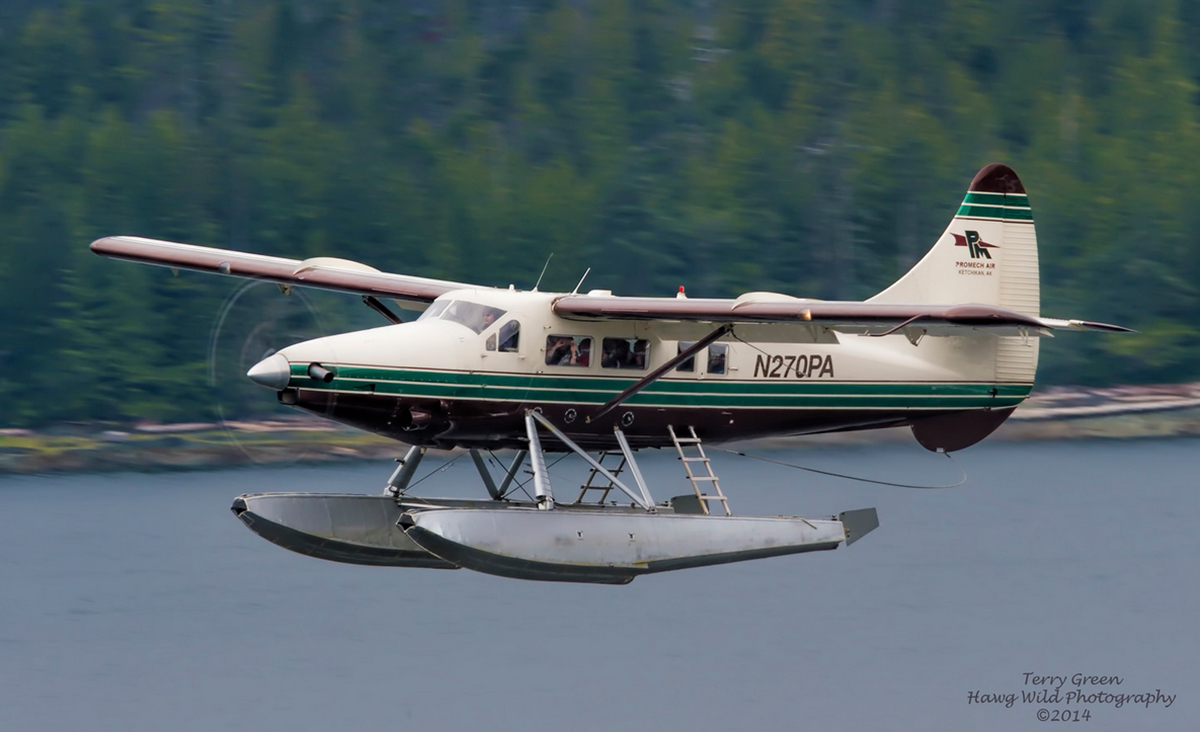
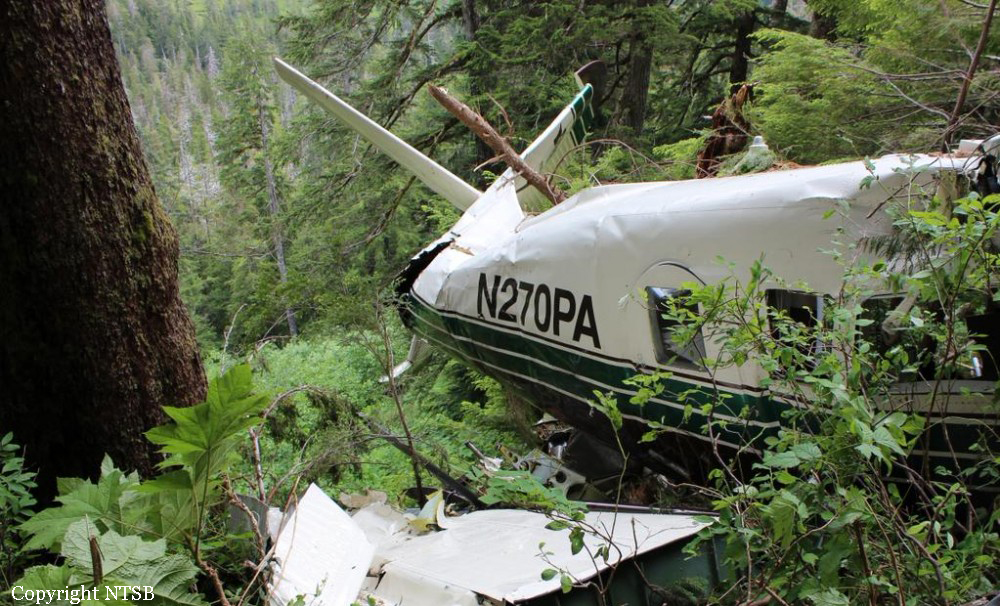
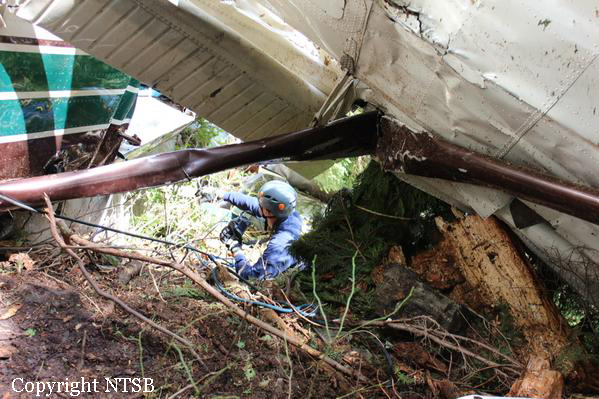
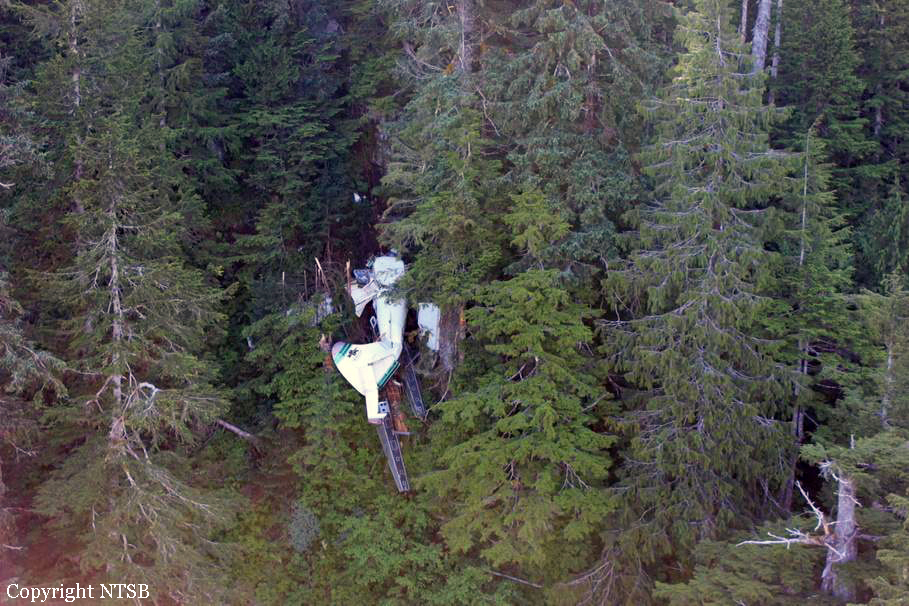
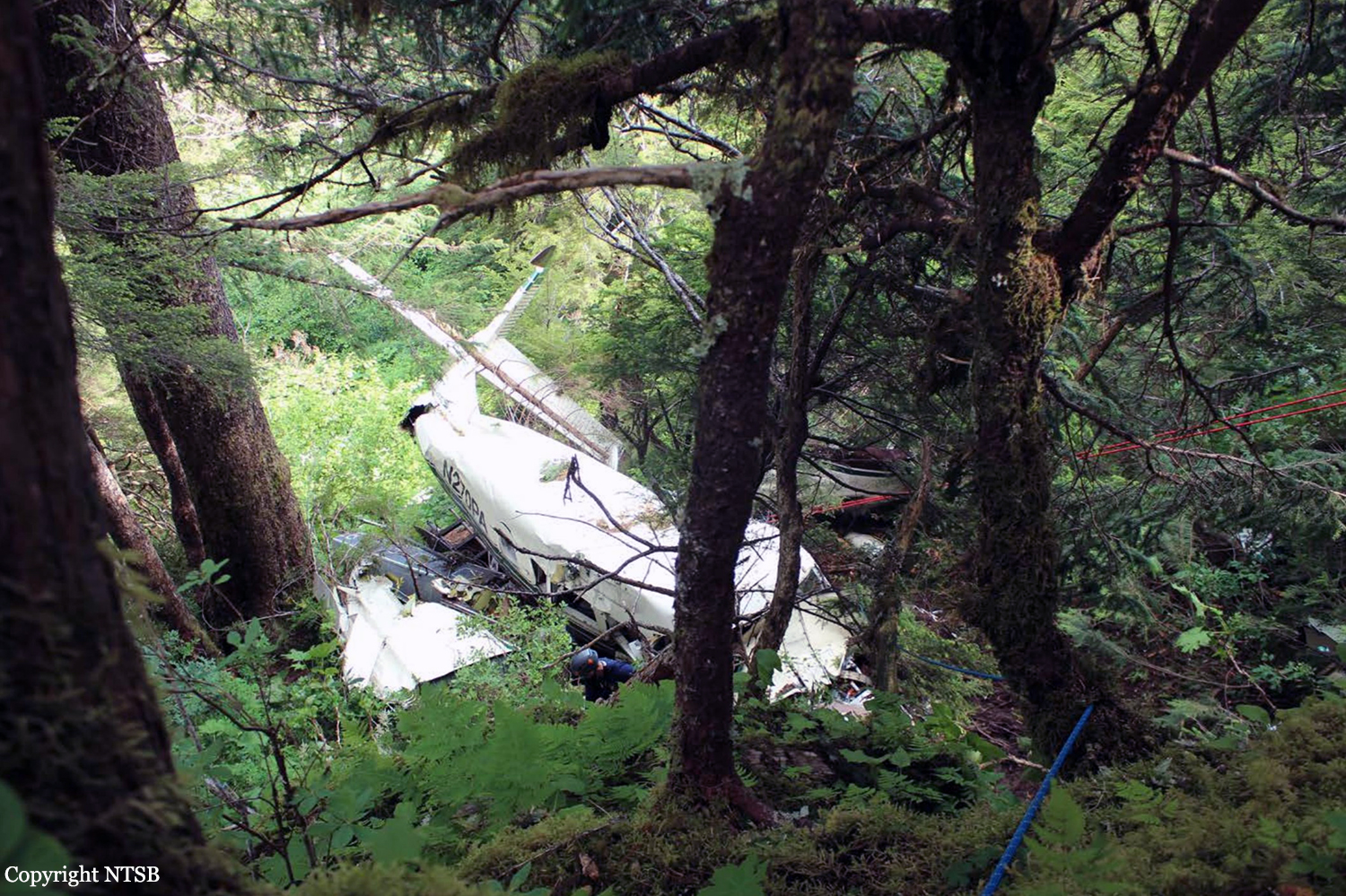
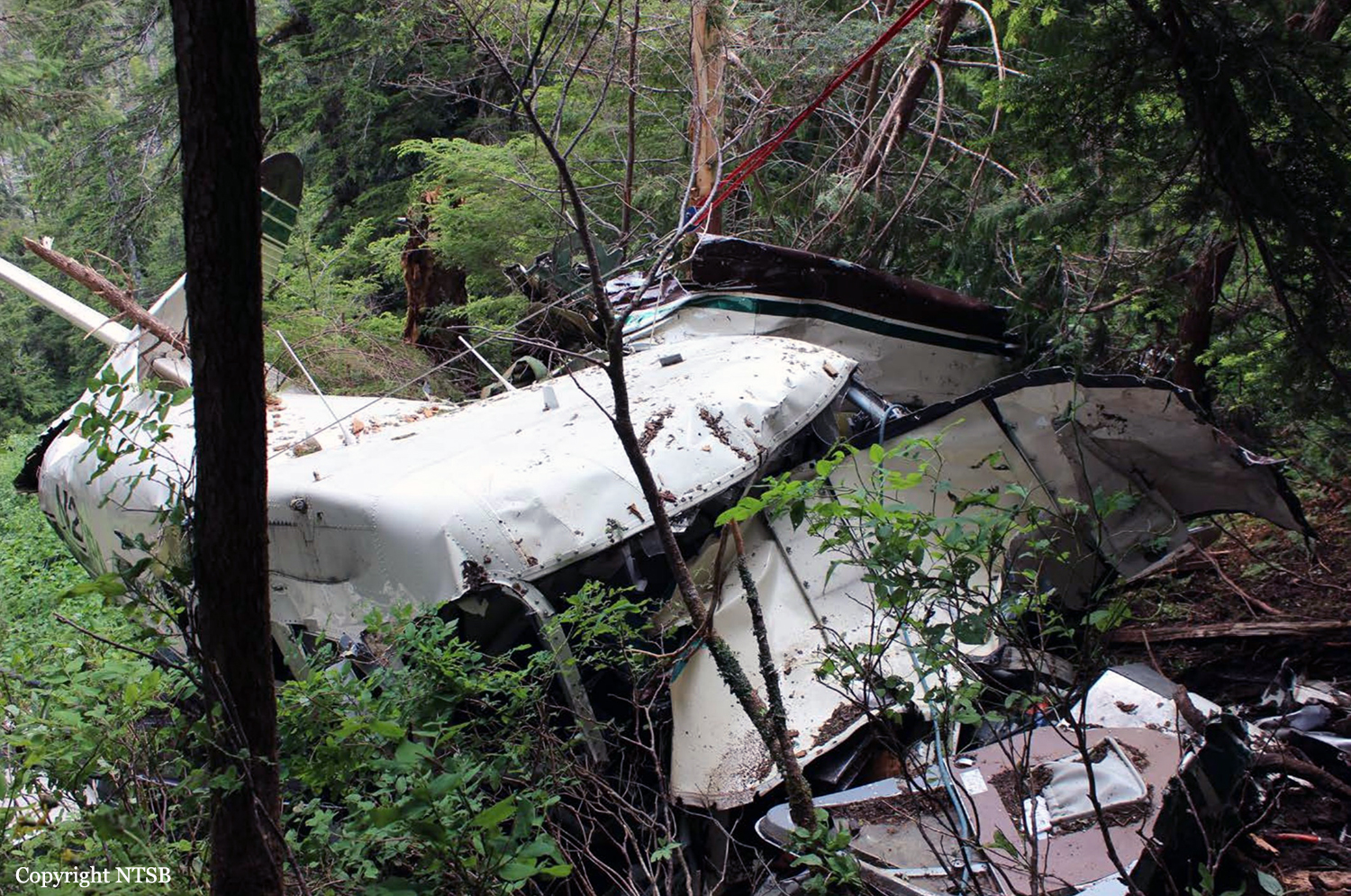
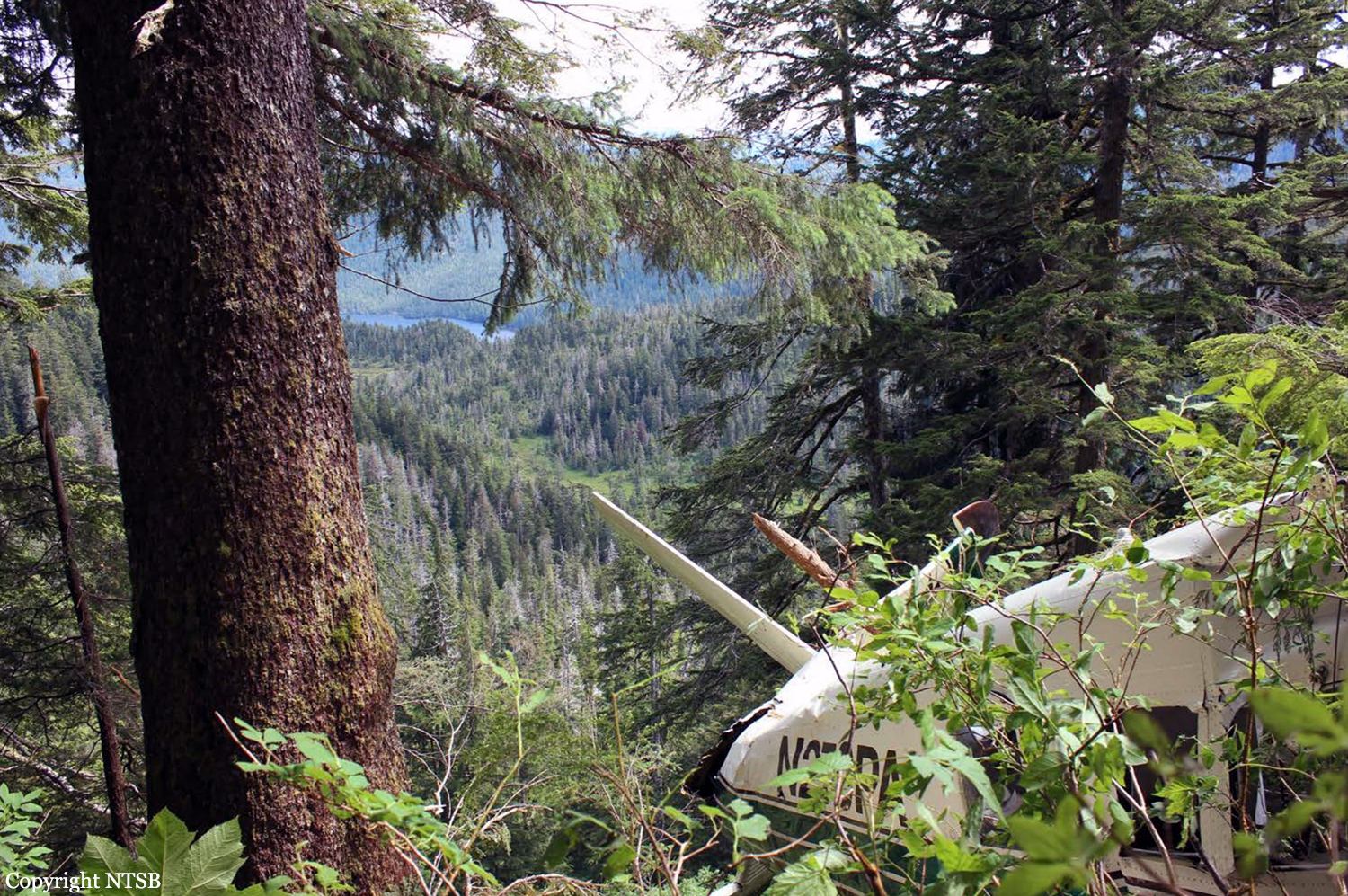
Crash of a De Havilland DHC-3 Otter near Ivanhoe Lake: 1 killed
Date & Time:
Aug 22, 2013 at 1908 LT
Registration:
C-FSGD
Survivors:
No
Schedule:
Scott Lake Lodge - Ivanhoe Lake
MSN:
316
YOM:
1959
Crew on board:
1
Crew fatalities:
Pax on board:
0
Pax fatalities:
Other fatalities:
Total fatalities:
1
Captain / Total hours on type:
248.00
Circumstances:
The float-equipped Transwest Air Limited Partnership DHC-3 turbine Otter (registration C-FSGD, serial number 316) departed Scott Lake, Northwest Territories, at approximately 1850 Central Standard Time on a 33-nautical mile, day, visual flight rules flight to Ivanhoe Lake, Northwest Territories. The aircraft did not arrive at its destination, and was reported overdue at approximately 2100. The Joint Rescue Coordination Centre Trenton was notified by the company. There was no emergency locator transmitter signal. A search and rescue C-130 Hercules aircraft was dispatched; the aircraft wreckage was located on 23 August 2013, in an unnamed lake, 10 nautical miles north of the last reported position. The pilot, who was the sole occupant of the aircraft, sustained fatal injuries.
Probable cause:
Findings as to causes and contributing factors:
1. During approach to landing on the previous flight, the right-wing leading-edge and wing tip were damaged by impact with several trees.
2. The damage to the aircraft was not evaluated or inspected by qualified personnel prior to take-off.
3. Cumulative unmanaged stressors disrupted the pilot’s processing of safety-critical information, and likely contributed to an unsafe decision to depart with a damaged, uninspected aircraft.
4. The aircraft was operated in a damaged condition and departed controlled flight likely due to interference between parts of the failing wing tip, acting under air loads, and the right aileron.
Findings as to risk:
Not applicable.
Other findings:
1. The emergency locator transmitter did not activate, due to crash damage and submersion in water.
2. The aircraft was not fitted with FM radio equipment that is usually carried by aircraft servicing the lodge. Lodge personnel did not have a means to contact the pilot once the aircraft moved away from the dock.
1. During approach to landing on the previous flight, the right-wing leading-edge and wing tip were damaged by impact with several trees.
2. The damage to the aircraft was not evaluated or inspected by qualified personnel prior to take-off.
3. Cumulative unmanaged stressors disrupted the pilot’s processing of safety-critical information, and likely contributed to an unsafe decision to depart with a damaged, uninspected aircraft.
4. The aircraft was operated in a damaged condition and departed controlled flight likely due to interference between parts of the failing wing tip, acting under air loads, and the right aileron.
Findings as to risk:
Not applicable.
Other findings:
1. The emergency locator transmitter did not activate, due to crash damage and submersion in water.
2. The aircraft was not fitted with FM radio equipment that is usually carried by aircraft servicing the lodge. Lodge personnel did not have a means to contact the pilot once the aircraft moved away from the dock.
Final Report:
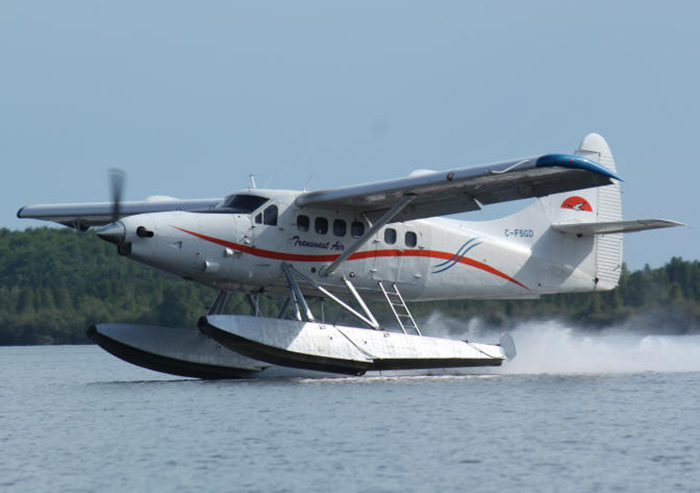
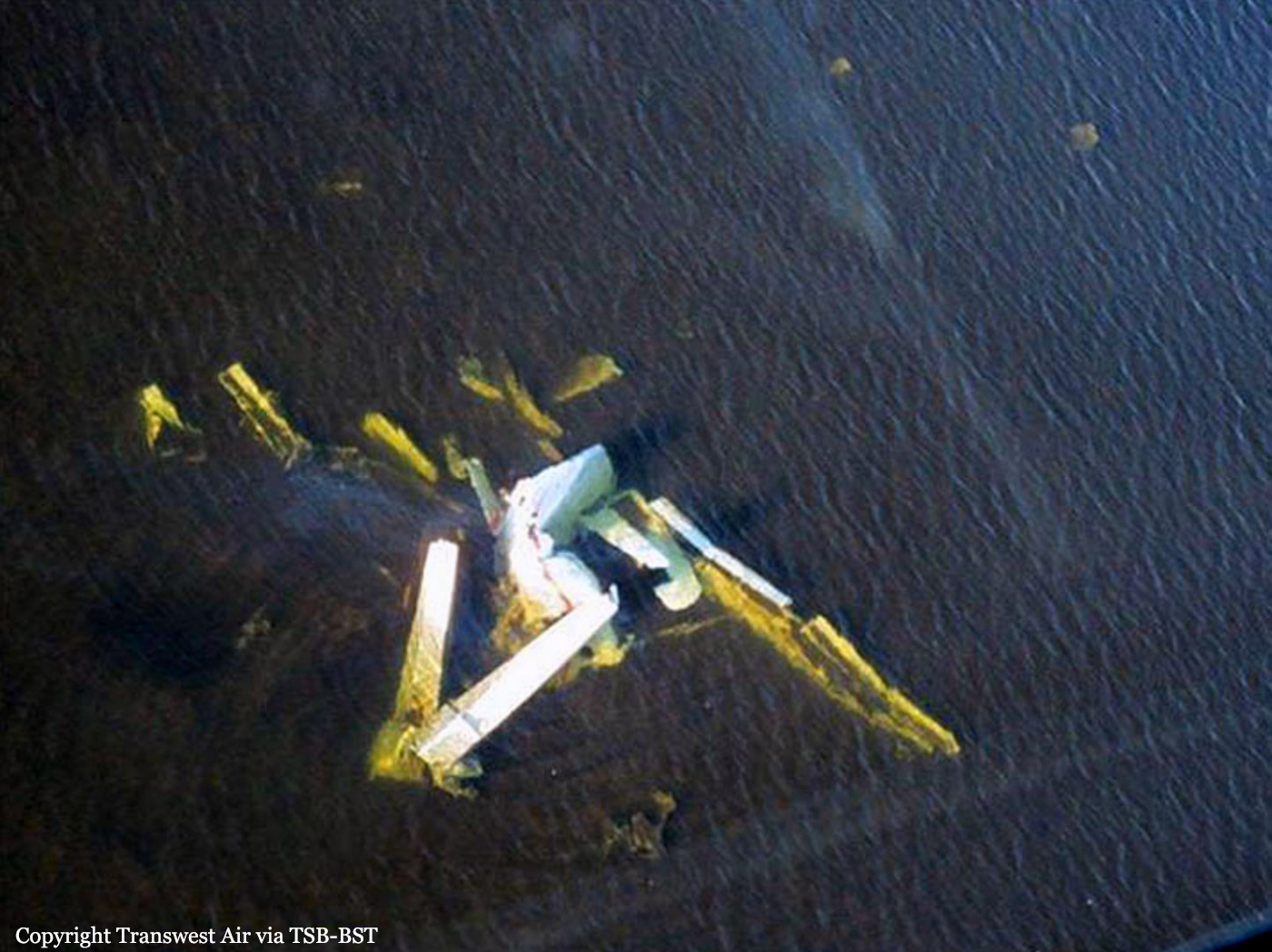
Crash of a De Havilland DHC-3T Turbo Otter in Soldotna: 10 killed
Date & Time:
Jul 7, 2013 at 1120 LT
Registration:
N93PC
Survivors:
No
Schedule:
Soldotna - Bear Mountain Lodge
MSN:
280
YOM:
1958
Crew on board:
1
Crew fatalities:
Pax on board:
9
Pax fatalities:
Other fatalities:
Total fatalities:
10
Captain / Total hours on type:
155.00
Aircraft flight hours:
22831
Circumstances:
Before picking up the nine passengers, the pilot loaded the accident airplane at the operator's base in Nikiski with cargo (food and supplies for the lodge). The operator of the lodge where the passengers were headed estimated the cargo weighed about 300 pounds (lbs) and that the passengers' baggage weighed about 80 lbs. Estimates of the passengers' weights were provided to the lodge operator in preparation for the trip, which totaled 1,350 lbs. The load manifest listed each of these weight estimates for a total weight of 1,730 lbs and did not contain any balance data. The cargo was not weighed, and the pilot did not document any weight and balance calculations nor was he required to do so. The airplane operator did not keep fueling records for each flight. A witness who was present during the fueling operations at the operator's base reported that he saw the pilot top off the front tank then begin fueling the center tank. The first leg of the trip from the operator's base to pick up the passengers was completed uneventfully. According to witnesses at Soldotna Airport, after loading the passengers and their baggage, the pilot taxied for departure. There were no witnesses to the accident. The airplane impacted the ground about 2,320 feet from the threshold of the departure runway and about 154 feet right of the runway centerline. An extensive postcrash fire consumed most of the airplane's cockpit and cabin area, including an unknown quantity of the baggage and cargo. Impact signatures were consistent with a nose- and right-wing-low attitude at impact. The entire airplane was accounted for at the wreckage site. Disassembly and examination of the engine and propeller revealed that both were operating during impact. Examination of the structure and flight control systems found no preimpact malfunctions or failures that would have precluded normal operation. The pilot was properly certificated and qualified in accordance with applicable federal regulations. Toxicological testing of specimens from the pilot was negative for any carbon monoxide, alcohol, or drugs. The airplane was not equipped, and was not required to be equipped, with any type of crashresistant recorder. A video recovered from a passenger's smartphone showed the accident sequence looking out of the row 4 left seat window; the left wing and flaps are in view for most of the sequence and the flap position does not change. The investigation found that the flaps were set to the full-down (or landing) position during takeoff, contrary to recommended procedures in the airplane flight manual (AFM). The recovered video was used to estimate the airplane speed, altitude, and orientation for the portion of the flight where ground references were visible, about 22.5 seconds after the start of the takeoff roll. For the first 12 seconds, the airplane accelerated linearly from the beginning of the takeoff roll through liftoff. The pitch angle decreased slightly in the first 8 seconds as the tail lifted, remained essentially constant for about 4 seconds, and began to slightly increase as the airplane lifted off. Beginning about 14 seconds after the start of the takeoff roll, the speed began decreasing and the pitch angle began increasing. The pitch angle increased at a constant rate (about 2.8 degrees/second), reaching a maximum value of about 30 degrees, and the ground speed decreased from its maximum of about 68 mph to about 44 mph at the end of the analyzed time. The ground references disappeared from the video frame as the airplane experienced a sharp right roll before impacting the ground several seconds later. The low speed, rapid right roll, and pitch down of the airplane is consistent with an aerodynamic stall. The constant pitch rate before the stall is consistent with an aft center of gravity (CG) condition of sufficient magnitude that the elevator pitch down authority was insufficient to overcome the pitching moment generated by the aft CG. Additionally, the flaps setting at the full-down (or landing) position, contrary to procedures contained in the AFM, would have exacerbated the nose-up pitching moment due to the increased downwash on the tail and aft shift of the center of pressure; the additional aerodynamic drag from the fully extended flaps would have altered the airplane's acceleration. Using the data available, the airplane was within weight and balance limitations for the first leg of the trip. However, the cargo loaded was about 2.4 times the weight indicated on the load manifest. Further, the total weight of cargo and baggage in the cargo area, as estimated during the investigation, exceeded the installed cargo net's load limit of 750 lbs by more than 50 lbs. Although the loaded cargo actual weight was higher than indicated on the load manifest, the flight from Nikiski to Soldotna was completed without any concerns noted by the pilot, indicating that even with the higher cargo load, the airplane was within the normal CG range for that leg of the flight. Thus, based on the investigation's best estimate and a calculation of the airplane's weight and balance using the recovered passenger weights, weights and location of the luggage recovered on scene, weight of the cargo recovered on scene, and weights accounting for the liquid cargo destroyed in the postimpact fire, once the passengers were loaded, the airplane weight would have exceeded the maximum gross weight of 8,000 lbs by about 21 lbs and the CG would have been at least 5.5 inches aft of the 152.2-inch limit (a more definitive calculation could not be performed because the exact location of the cargo was not known). Additionally, the kinematics study of the accident airplane's weight and motion during initial climb and up to the point of stall found that with the pilot applying full pitch-down control input, the CG required to produce the motion observed in the video was likely just past 161 inches. Thus, the only way for the airplane motion to match the motion observed in the video was for the CG to be considerably aft of the 152.2-inch limit, which provides additional support to the results from the weight and balance study. Based on the video study, the weight and balance study constructed from available weight and balance information, and the kinematics study, the airplane exceeded the aft CG limit at takeoff, which resulted in an uncontrollable nose-up pitch leading to an aerodynamic stall. The CG was so far aft of the limit that the airplane likely would have stalled even with the flaps in the correct position. Neither 14 CFR Part 135 nor the operator's operations specifications (OpSpec) require that the aircraft weight and balance be physically documented for any flights. However, according to Section A096 of the OpSpec, when determining aircraft weight and balance, the operator should use either the actual measured weights for all passengers, baggage, and cargo or the solicited weights for passengers plus 10 lbs and actual measured weights for baggage and cargo. The operator did not comply with federal regulations that require adherence to the weighing requirements or the takeoff weight limitations in the AFM. Additionally, although the inaccurate estimate of 300 lbs for the cargo resulted in a calculated CG that was within limits for both legs of the flight, the actual weight of the cargo was significantly higher. Once loaded in Soldotna, the combination of the passengers, their baggage, and the actual cargo weight and its location resulted in the CG for the accident flight being significantly aft of the limit. With the CG so far aft, even with full nose-down input from the pilot, the nose continued to pitch up until the airplane stalled. For each flight in multiengine operations, 14 CFR 135.63(c) requires the preparation of a load manifest that includes, among other items the number of passengers, total weight of the loaded aircraft, the maximum allowable takeoff weight, and the CG location of the loaded aircraft; one copy of the load manifest should be carried in the airplane and the operator is required to keep the records for at least 30 days. Single-engine operations are excluded from this requirement. The NTSB attempted to address this exclusion with the issuance of Safety Recommendations A-89-135 and A-99-61, which asked the Federal Aviation Administration (FAA) to amend the record-keeping requirements of 14 [CFR] 135.63(c) to apply to single-engine as well as multiengine aircraft. The FAA did not take the recommended action in either instance, and the NTSB classified Safety Recommendations A-89-135 and A-99-61 "Closed—Unacceptable Action" in 1990 and 2014, respectively.
Probable cause:
The operator's failure to determine the actual cargo weight, leading to the loading and operation of the airplane outside of the weight and center of gravity limits contained in the airplane flight manual, which resulted in an aerodynamic stall. Contributing to the accident was the Federal Aviation Administration's failure to require weight and balance documentation for each flight in 14 Code of Federal Regulations Part 135 single-engine operations.
Final Report:
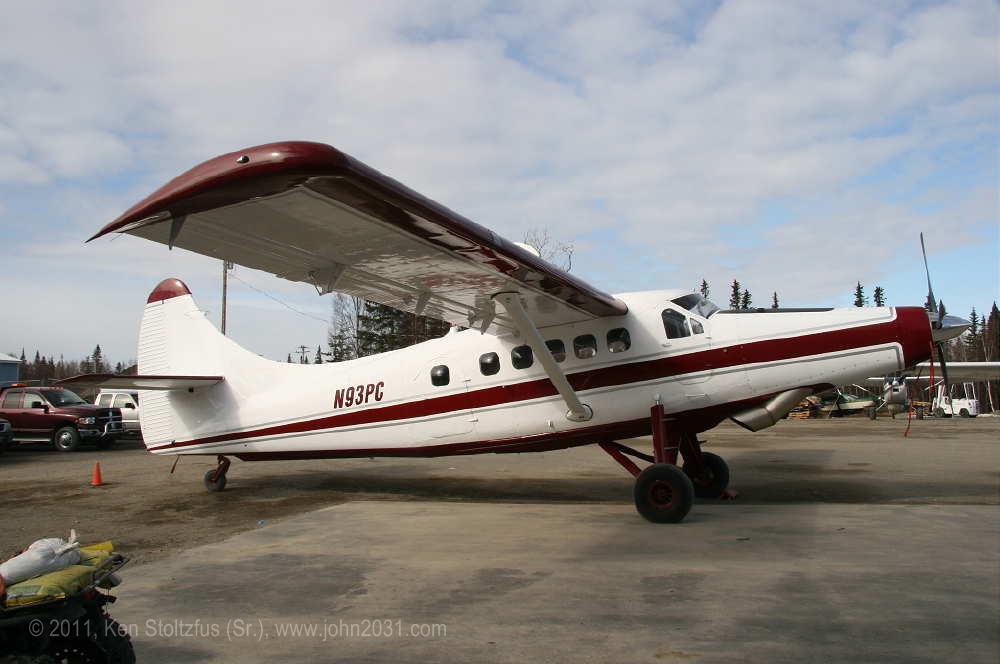
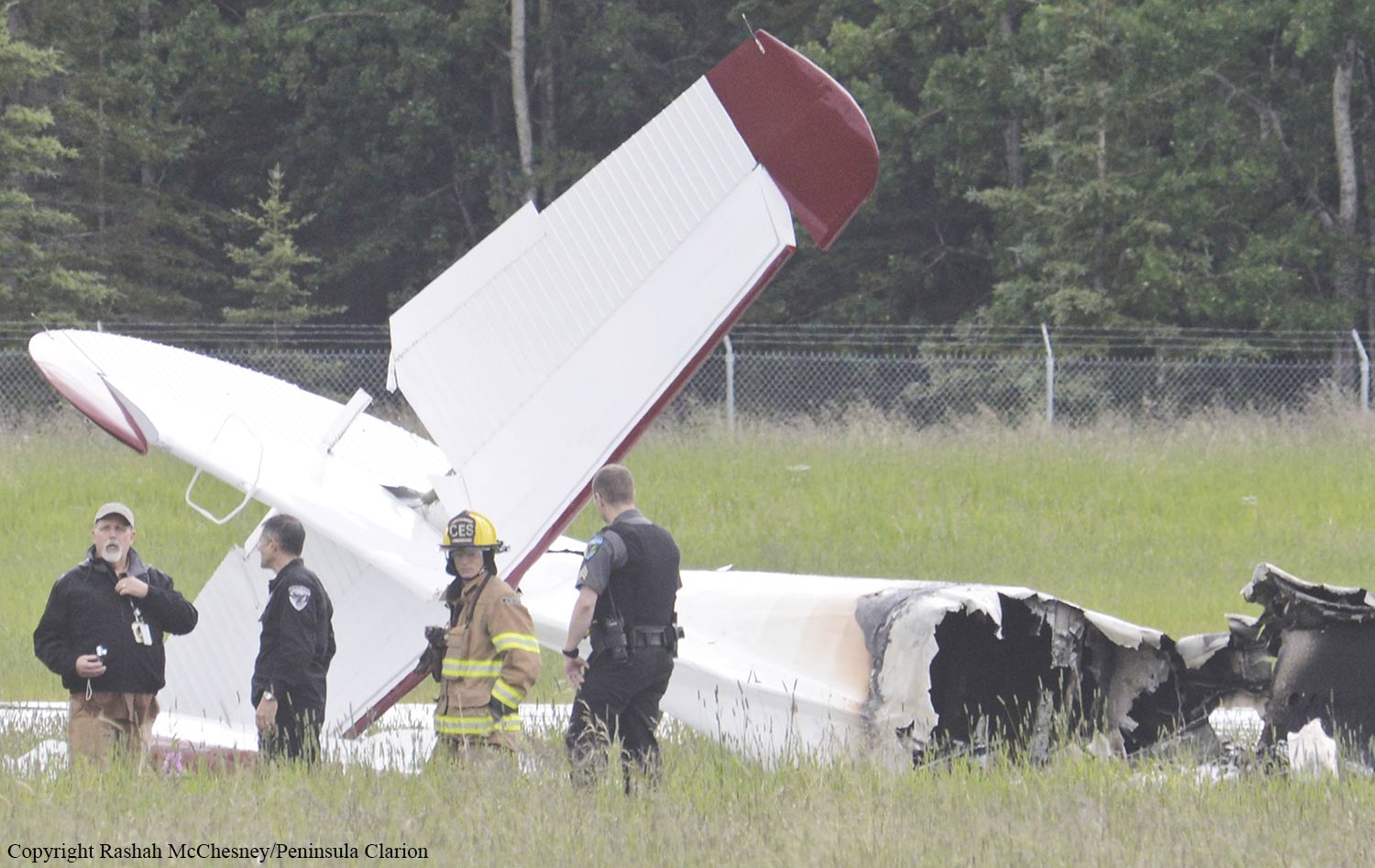
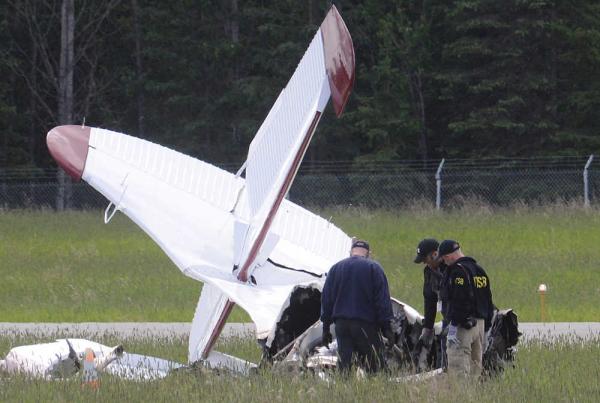
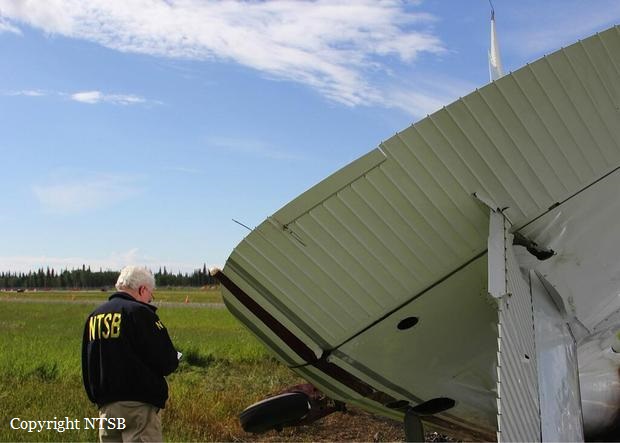
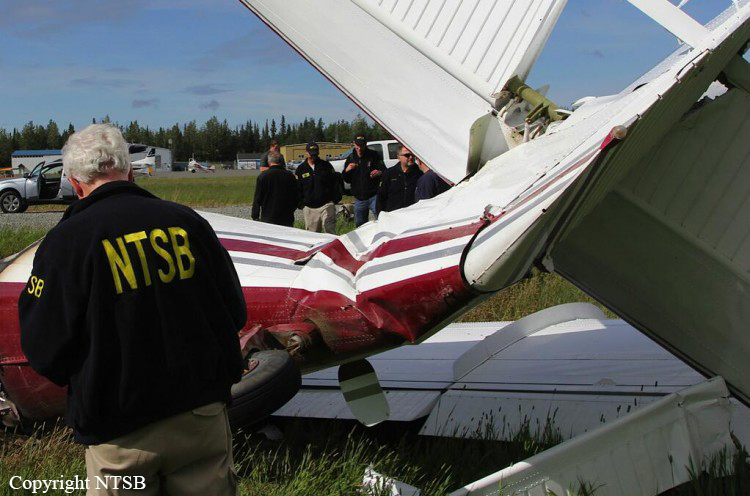
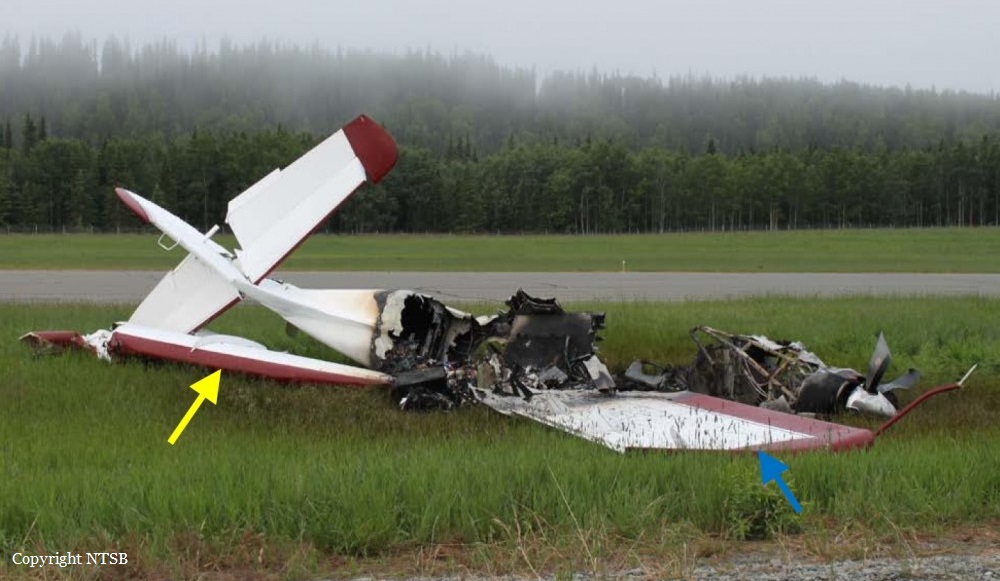
Crash of a De Havilland DHC-3T Turbo Otter near Kodiak: 1 killed
Date & Time:
Sep 23, 2011 at 1930 LT
Registration:
N361TT
Survivors:
Yes
Schedule:
Old Harbor - Kodiak
MSN:
361
YOM:
1960
Crew on board:
1
Crew fatalities:
Pax on board:
2
Pax fatalities:
Other fatalities:
Total fatalities:
1
Captain / Total hours on type:
280.00
Aircraft flight hours:
14634
Circumstances:
According to a passenger who was seated in the front, right seat, as the flight progressed toward the destination, the pilot decided to make an unscheduled landing at a lake that was surrounded by rising terrain. The passenger said that after making an easterly approach to the lake, before touching down, the pilot initiated a go-around. The passenger said they flew low over the surface of the lake toward a “V” shaped notch formed by a creek with hills on either side at the east end of the lake. He said that while flying through the notch, he thought the left wing of the airplane had hit the hillside. He said the pilot reacted by pulling back hard on the control yoke and rolling the airplane to the right. The airplane entered a steep climb, it began to shake, and stall warning horn sounded. The airplane then rolled left into a steep descent and impacted the ground in a nose-down attitude. The airplane’s left wing had impacted a tree on the creek bank prior to the crash. A postaccident examination of the airframe and engine revealed no evidence of mechanical malfunctions or failures that would have precluded normal operation. Toxicological tests detected the pilot’s recent use of over-the-counter medications used for relief of cold and flu symptoms. Two of these medications are sedating. The use of these sedating medications on the day of the accident or the underlying illness may have affected the pilot’s performance. Given the lack of mechanical deficiencies with the airplane, and the passenger's account of the accident, it is likely the pilot failed to maintain adequate clearance with a tree while performing a low altitude maneuver following a go-around.
Probable cause:
The pilot’s failure to maintain clearance from a tree during a low altitude maneuver and his failure to maintain control of the airplane. Contributing to the accident was the pilot’s use of over-the-counter sedating medications.
Final Report:
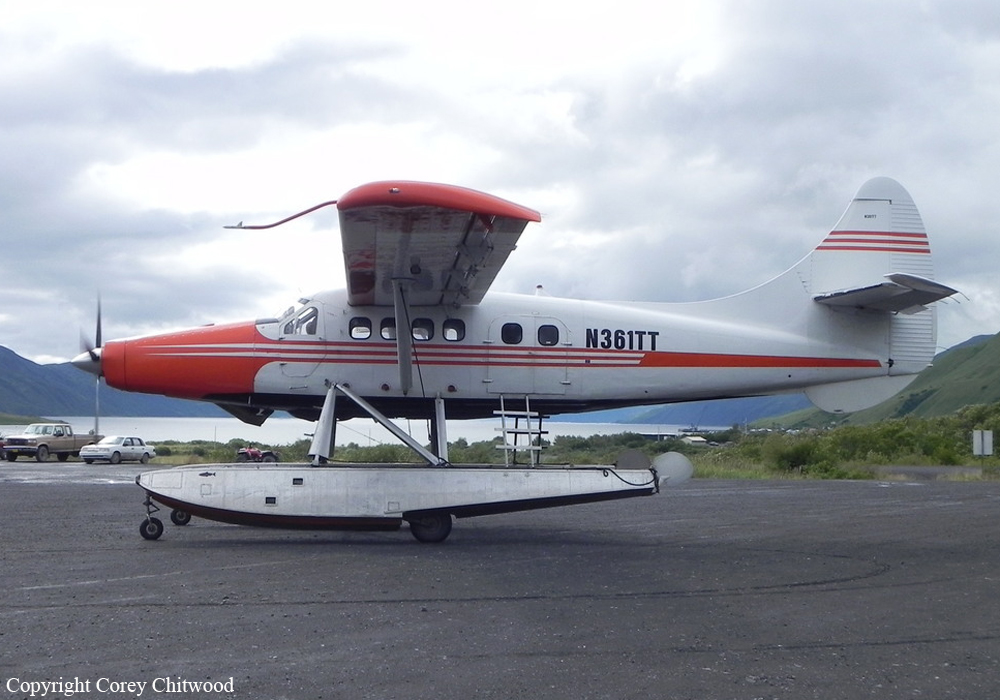
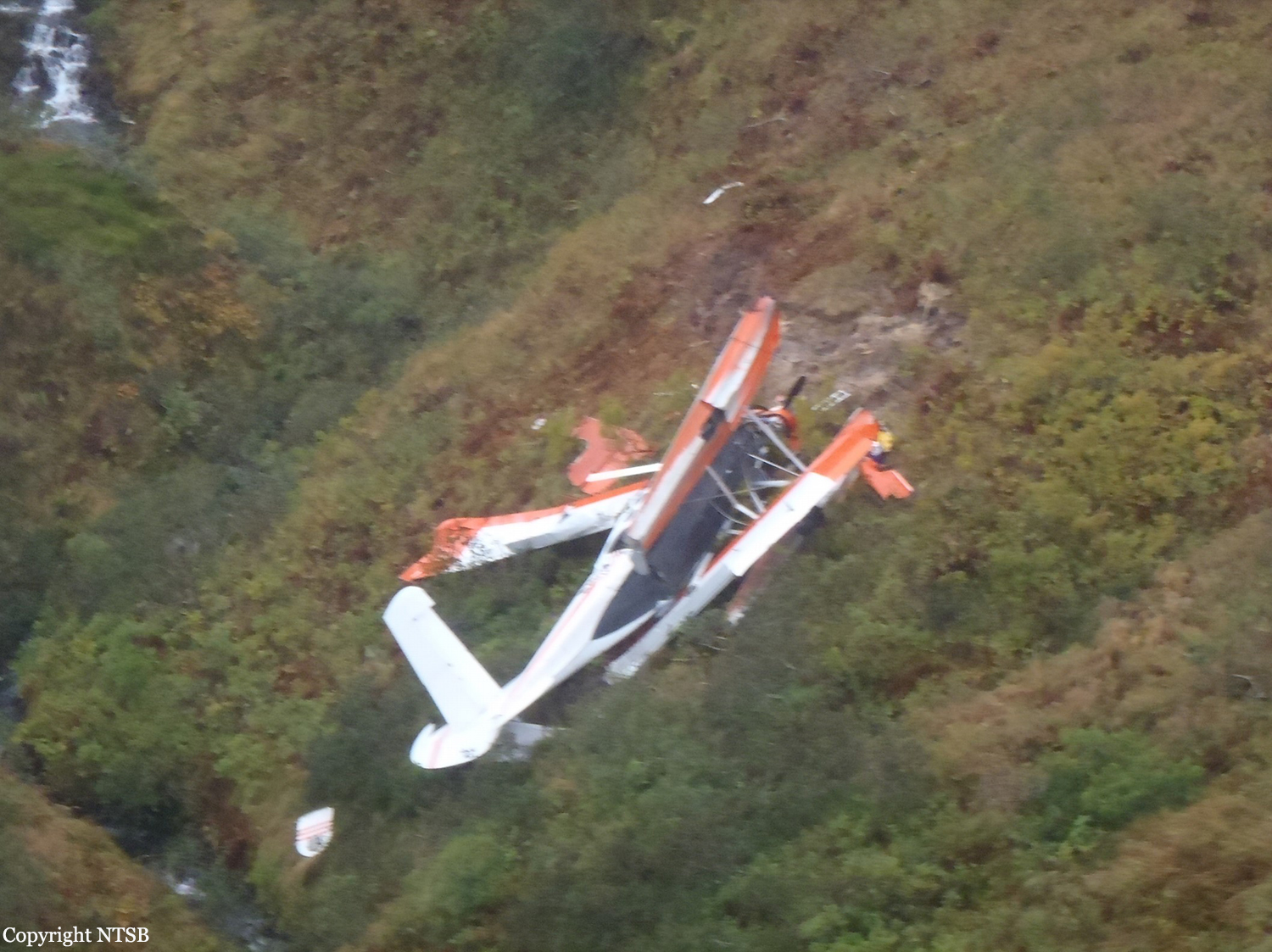
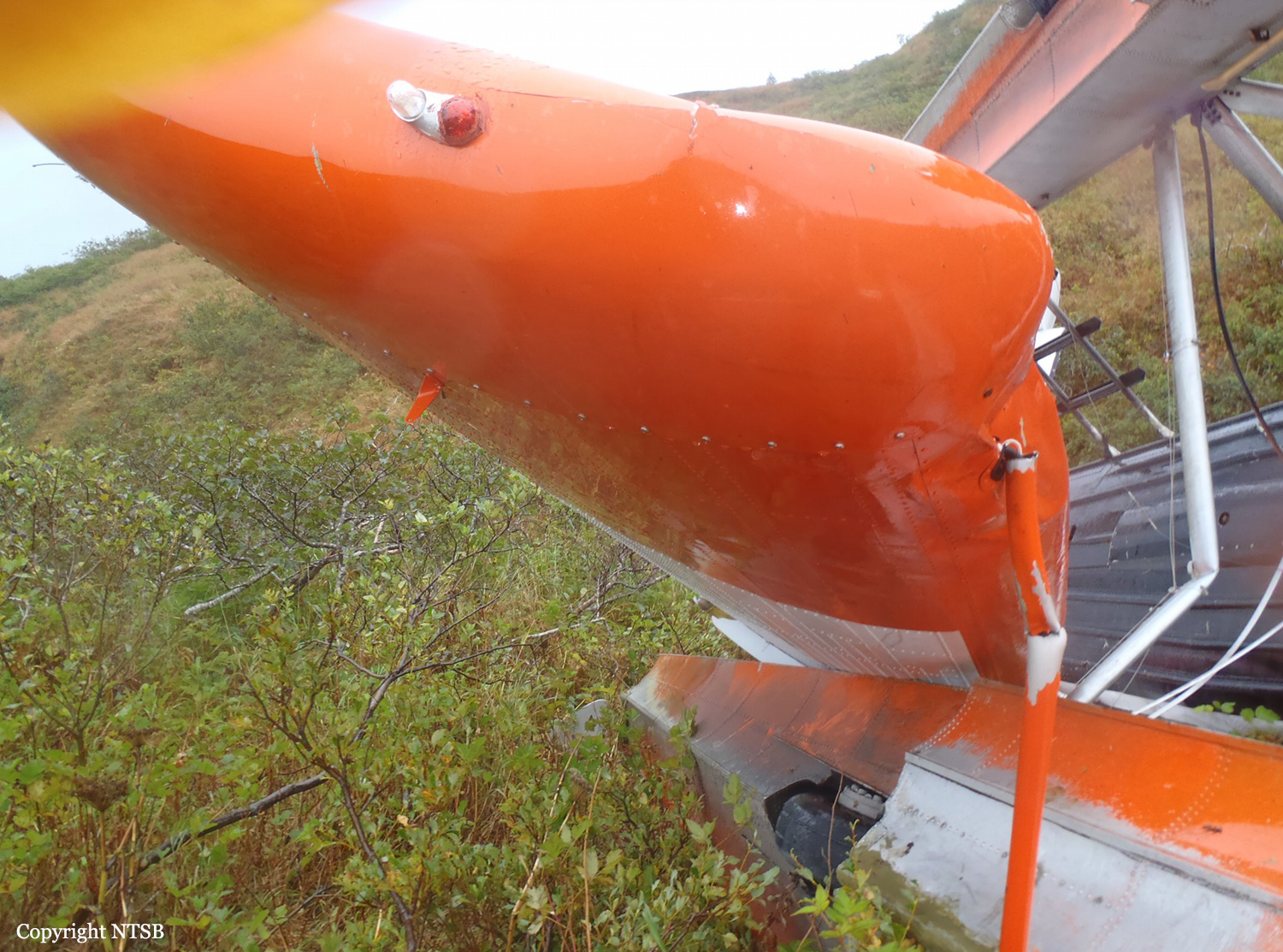
Crash of a De Havilland DHC-3 Otter in Mayo: 1 killed
Date & Time:
Mar 31, 2011 at 1507 LT
Registration:
C-GMCW
Survivors:
No
Schedule:
Mayo - Rackla
MSN:
108
YOM:
1956
Crew on board:
1
Crew fatalities:
Pax on board:
0
Pax fatalities:
Other fatalities:
Total fatalities:
1
Captain / Total hours on type:
3000.00
Aircraft flight hours:
16431
Circumstances:
The aircraft was being utilized in support of mineral exploration activities, to transport building materials, fuel, and winter camp supplies from Mayo, Yukon, to winter airstrips located at Withers Lake and Rackla River, Yukon. Withers Lake is located 113 statute miles (sm) east of Mayo, and Rackla Airstrip is located 94 sm northeast of Mayo (Appendix B). On the accident flight, the aircraft was transporting a load of twelve 6-inch by 6-inch wood timbers, each 16 feet long, and 2 barrels of jet fuel. The pilot had arrived at the Mayo Airport at about 0630 1 on the morning of the accident. The pilot’s first trip of the day was to Withers Lake, departing Mayo at 0834. The pilot completed 2 trips to Withers Lake and 1 trip to Rackla prior to the accident flight. The accident flight departed Mayo at 1448 under visual flight rules (VFR) on a company itinerary. At 1507 the Canadian Mission Control Centre (CMCC) received a 406-MHz emergency locater transmitter (ELT) alert. Joint Rescue Co-ordination Centre Victoria (JRCC Victoria) was notified at 1522. Aircraft operating in the area were alerted, and a commercial helicopter was dispatched from Ross River, Yukon, approximately 1 hour later to search for the aircraft. The helicopter crew located the aircraft wreckage at 1833 at about 4300 feet above sea level (asl), on a remote, snow-covered hillside 38 nautical miles (nm) northeast of Mayo.
Probable cause:
The aircraft departed controlled flight for reasons which could not be determined, and broke up due to high speed.
Final Report:
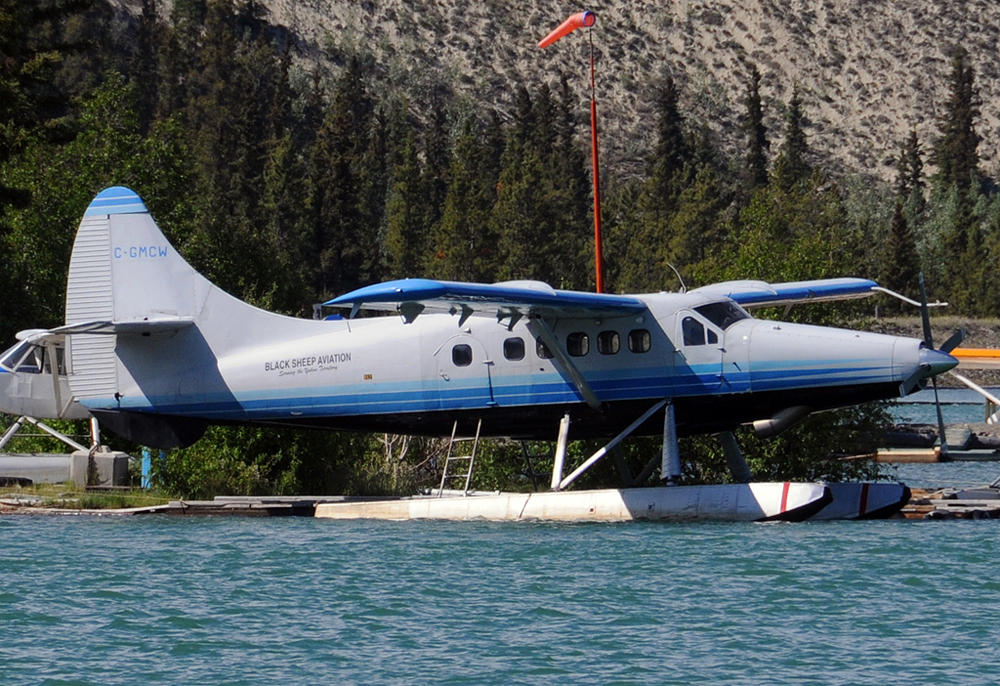
Crash of a De Havilland DHC-3T Turbo Otter near Aleknagik: 5 killed
Date & Time:
Aug 9, 2010 at 1442 LT
Registration:
N455A
Survivors:
Yes
Schedule:
Nerka Lake - Nushagak River
MSN:
206
YOM:
1957
Crew on board:
1
Crew fatalities:
Pax on board:
8
Pax fatalities:
Other fatalities:
Total fatalities:
5
Captain / Total hours on type:
35.00
Aircraft flight hours:
9372
Circumstances:
On August 9, 2010, about 1442 Alaska daylight time, a single-engine, turbine-powered, amphibious float-equipped de Havilland DHC-3T airplane, N455A, impacted mountainous, tree-covered terrain about 10 nautical miles (nm) northeast of Aleknagik, Alaska. The airline transport pilot and four passengers received fatal injuries, and four passengers received serious injuries. The airplane sustained substantial damage, including deformation and breaching of the fuselage. The flight was operated by GCI Communication Corp. (GCI), of Anchorage, Alaska, under the provisions of 14 Code of Federal Regulations (CFR) Part 91. About the time of the accident, meteorological conditions that met the criteria for marginal visual flight rules (MVFR) were reported at Dillingham Airport (DLG), Dillingham, Alaska, about 18 nm south of the accident site. No flight plan was filed. The flight departed about 1427 from a GCI-owned private lodge on the shore of Lake Nerka and was en route to a remote sport fishing camp about 52 nm southeast on the Nushagak River. According to GCI lodge personnel, the purpose of the flight was to transport the lodge guests to the fishing camp for an afternoon of fishing. The GCI lodge manager stated that the accident pilot had flown previously that morning in the accident airplane to DLG, where he dropped off another GCI pilot and then returned to the lodge. Sky Connect tracking system data for the accident airplane showed that, on that previous trip, the accident pilot departed the lodge for DLG about 0902 and returned about 1120. A review of DLG flight service station (FSS) recordings revealed that, about 1105, during the return flight from DLG to the lodge, the accident pilot filed a pilot report (PIREP) in which he reported ceilings at 500 feet, visibility of 2 to 3 miles in light rain, and “extremely irritating…continuous light chop” turbulence that he described as “kind of that shove-around type stuff rather than just bumps.” According to GCI lodge personnel, when the pilot returned to the lodge, he stated that the weather was not conducive for a flight to the fishing camp because of the turbulence and low ceilings. Passengers from the accident flight and GCI personnel indicated during postaccident interviews that, by the time that they had lunch about 1300, the weather had improved, and the group discussed with the pilot the option of going to the fishing camp. One passenger characterized the conversation as casual and stated that no pressure was placed on the pilot to make the flight or to depart by a certain time. The GCI lodge manager and some passengers stated that they thought that the pilot checked the weather on the computer during lunch, and the guest party co-host (one of GCI’s senior vice presidents) stated that the pilot informed him about 1400 that he was comfortable taking the group to the fishing camp if the group wanted to go. The GCI lodge manager stated that, before the airplane departed, he sent an e-mail to the fishing camp to indicate that the guests were coming, and personnel there informed him that the pilot had already contacted them. The lodge manager stated that he went down to the dock to help push the airplane off and that, when the flight departed, he could see all of Jackknife Mountain across the lake. (The mountain’s highest peak, which is about 3 nm from the dock, is depicted as 2,326 feet above mean sea level [msl] on an aviation sectional chart, and the elevation of Lake Nerka is depicted as about 40 feet msl on a topographical map.) He stated that the weather included broken ceilings about 2,000 feet above ground level (agl) with some blue patches in the sky and good visibility. The flight route from the lodge to the fishing camp traversed Class G airspace; 14 CFR 91.155 specifies that, for daytime flights below 1,200 feet agl, the flight must be flown clear of clouds and in conditions that allow at least 1 mile flight visibility. During a postaccident interview, the passenger who was in the right cockpit seat stated that, when the airplane departed, the visibility was “fine.” He stated that the pilot went a different direction during takeoff (compared to the passenger’s experiences during previous flights to the fishing camp) and that the pilot said it was to avoid “wind and weather.” The passenger described the weather as cloudy above with light turbulence. He stated that the airplane stayed below the clouds and that he noticed water “running across” the outside of the windshield before he fell asleep about 10 minutes into the flight. Another passenger, who was seated in the second seat behind the pilot on the left side of the airplane, stated that some fog was present beneath the airplane but that he did not think that the airplane flew into any clouds. He estimated that he fell asleep about 3 to 4 minutes after departure. The passenger who was in the first seat behind the pilot on the left side of the airplane stated in an initial interview that he could not see well out his side window and that he had no indication of the weather; however, in a subsequent interview, he stated that, once the airplane was airborne, he could not see the ground and could see only “white-out” conditions outside the airplane. He stated in the subsequent interview that he did not know if the airplane had climbed into clouds initially or if it had entered clouds at some point along the way. The passenger who was in the third seat behind the pilot on the left side of the airplane stated that the pilot kept the airplane below the cloud ceiling and flew along the tree line, followed streams, and maneuvered to avoid terrain. The passenger stated that the airplane banked into a left turn (he said that the bank angle was not unusual) and then immediately impacted terrain. Neither he nor the other passenger who was awake at the time of impact recalled noticing any unusual maneuvering, unusual bank or pitch angles, or change in engine noises that would indicate any problem before the airplane impacted terrain. The wreckage was found at an elevation of about 950 feet msl in steep, wooded terrain in the Muklung Hills, about 16 nm southeast of the GCI lodge. Figure 1 shows the accident site (view looking north-northwest).
Probable cause:
The pilot's temporary unresponsiveness for reasons that could not be established from the available information. Contributing to the investigation's inability to determine exactly what occurred in the final minutes of the flight was the lack of a cockpit recorder system with the ability to capture audio, images, and parametric data.
Final Report:
